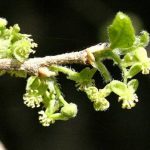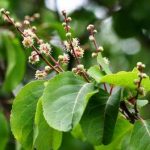TREE LIFE
August 1996
Saturday 3rd August. Botanic Garden Walk at 10.45 for 11 a.m. We will meet Tom in the public car park of the Gardens. If there is a topic which particularly interests you, please let us know. There will be a guard for the cars.
Sunday 18th August. This month we are visiting Imire Game Park, to a section which is reserved for junior bush camps and therefore not usually open to the general public. This section is also reserved for the Imire herd of Nyala. There are a few thatched shelters and a toilet. The kopjie we will be heading for is accessed along a dam wall so wear comfortable shoes. We believe that items of historic interest were found amongst the boulders on the kopjie which the owners may be able to tell us about. meet at 10 a.m. About 112km from Harare.
Saturday 24th August. We continue with Part 3 (Flowering) and Part 4 (Social Struggle) of the remarkable video by David Attenborough entitled The Private Life of Plants. The venue is Chisipite Girls High School. Bring your own refreshments for the break. Each part takes about ¾ hour, so we expect to be on our way home well before 5 o’clock.
Tuesday 3rd September. Botanic Garden Walk – back to summer time.
MATABELELAND CALENDAR
August 8th-12th. Visit to Buchwa Mountain where it is proposed that the group will split into two sections, one tackling the top of the mountain (for those with a good head for heights); the other group will approach from the bottom on the windward (wet side). It is hoped that we will be able to relocate the Oreobambos buchwaldii with the help of Dr. T. Muller. A visit to Nyoni Hills, the home of Calantica jalbertii (Bivinia jalbertii) is also planned.
September 6th – 8th. Perhaps a visit to Shashe Wilderness Camp. Costs as follows – $50 per day/night for the camp. $30 per day per person for non Wild life members. $20 per day per person for Wild life members. Facilities at the camp include showers & toilets, kitchen, dining room, two thatched dormitories with beds and mattresses, cooking pots, pans, plates, crockery, cutlery, a stove and fridges. Bring food, drink, bed linen, toilet requisites, sun screen and insect repellent. The booking must be confirmed before mid August, so if you wish to go to Shashe please phone Anthon Ellert.
Sunday 6th September. Visit to Clem Von Vliet’s old garden at Douglasdale.
Correction to the report on the visit to find the Erythrophysa at Malilangwe. It was Bookie Peek who actually found the Erythrophysa transvaalensis, and who led Ian to them. Subsequent to that visit Bookie has located another colony of these plants which is exciting. Perhaps they are more plentiful than originally thought.
FELICIA FILIFOLIA REDISCOVERED NEAR FORT RIXON
Felicia is a genus in the Compositae. It is mainly a South African genus, but a number of species extend to tropical Africa. In Zimbabwe, there are four species, one of which has been divided into two subspecies. All are either herbs or small shrubs.
In c.1967, Bob Drummond found material of a new Felicia in the Fort Rixon area of Insiza District (in the Western Division of Flora Zambesiaca). The material was poor so that Grau in his 1980 revision of Felicia in Kirkia was doubtful as to whether it was Felicia filifolia. However, subsequent gatherings have confirmed that this name is correct.
On 3 May 1996, a specimen was found again in the Fort Rixon area, spotted by the keen eyes of Maureen Silva-Jones. It was growing in ordinary-looking open miombo woodland, the only unusual plant seen in the area was Senecio barbertonicus which was common. I must mention that Bob Drummond had told us about the plant and we had been on the look-out for it. However, despite this and having “got our eyes in” by finding this one shrub, we did not see it again.
The plant was a small shrub (c.75 cm high). The flower heads are about 3 cm across with large white rays. The plant was covered in flowers so was quite striking.
In South Africa, the species occurs from the Transvaal southwards to Cape Province. In Zimbabwe, one can only speculate on its status. It might be an extension of its native range, but as it is a rather weedy species in South Africa (per Bob Drummond), I think it is more likely that it has been introduced.
Set out below is Grau’s key to Zimbabwean Felicia adapted to include Felicia filifolia.
1 Rays yellow mossamedensis
1 Rays white, blue or violet 2
2 Annual or biennial herb welwitschii
2 Shrubs (often small) 3
3 Peduncles with stalked patent glands, at least
above clavipilosa spp. clavipilosa
3 Peduncles glabrous or hairy above 4
4 Rays c.12 mm long filifolia
4 Rays c.5-8 mm long 5
5 Leaves linear, acicular, on the older branches
fascicled muricata
5 Leaves lanceolate, not acicular and not
fascicled clavipilosa spp. transvaalensis
-Mark Hyde
BAKWE ESTATE – RAFFINGORA. 16 JUNE 1996.
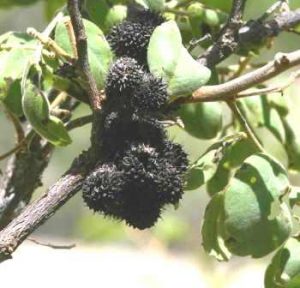
Dalbergia nitidula. Photo: Bart Wursten. Source: Flora of Zimbabwe
It was a lovely day on this quiet corner of the farm and members seemed to make the most of their arrival to catch up on all the gossip and listen as the Chairman berated 4×4 Landcruiser drivers after having lost a window to a stone on the way to Raffingora. However, after waiting a suitable period we stated towards the kopjie. First stop was the Dalbergia nitidula with “arthritic elbows” and rough, fissured and flaking bark. One of the black-woods, infusion of Dalbergia nitidula bark has been used in local traditional medicine to treat skin ulcers while the root can be buried under a doorstep to drive away evil spirits. Starting up the granite hillside we were ordered to turn around and look at the Pterocarpus angolensis which had some somewhat old and bedraggled fruit hanging from the branches. We listened in awe as the experts and want-to-be experts discussed the use of the lovely highly stable timber. How it might be more easily grown from truncheons than seed but how the truncheon-propagated trees might be more stunted and more prone to drought through loss of a well-developed tap root.
We continued our way up through the dead and living Aloe chabaudii (mottled leaves when small, plain green when a bit more mature) to be confronted with a quiz from the chairman – could we recognise the tree? As we struggled to get our mental processes into gear he started explaining how to recognize the Diospyros lyci… a strange look came over his face as he realised something was wrong. Certainly the small 4-winged fruit didn’t fit the picture. In fact, it was a Pteleopsis anisoptera, a false Combretum which is normally only found at lower altitudes (we were at about 3400 feet). The leaves seemed to have a little bee-sting rather than notches but the leaf buds in the axils of the leaves were obvious. Pteleopsis myrtifolia (2-winged Pteleopsis) is this tree’s cousin occurring in the Zambezi Valley and southern lowveld.
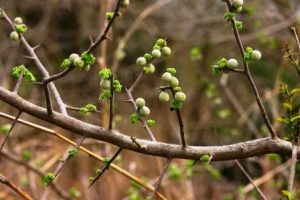
Commiphora africana. Photo: Bart Wursten. Source: Flora of Zimbabwe
As we made our way up we observed the Mundulea with its corky trunk, a leafless Commiphora africana, conspicuous with its many spines and finally reached a thicket which kept our interest for a while. An Afzelia quanzensis towered above the group as we picked at the Bauhinia petersiana (probably subsp. petersiana rather than subsp. serpae which tends to have a more southerly and westerly distribution). Ficus glumosa, the African rock-splitting fig, with a distinctive hairy growing tip was trying to live up to its name next to a Psydrax livida with the Chairman going wild over its interpetiolar stipules (I think that means it belongs to the Rubiaceae family). Then our experts puzzled over 2 trees while the others admired the Cussonia arborea or just chatted in the sun. Finally we were told that the tree with leaves of varying sizes and strange buds was Hexalobus monopetalus (baboons’ breakfast) and the other was Elaeodendron matabelicum: (old name Cassine matabelica). After looking at a Terminalia stenostachya with the cratered branchlets we wound our way round Pavetta schumanniana (the Chairman really thinks the leaves look like battered veldskoens?!). Grewia monticola (trying to make me believe it was a funny Strychnos or a Ziziphus without thorns). Vangueria sp. (it’s hairier!) and finally reached a Combretum which defied our simple minds since it has no fruit (was it Combretum collinum with larger than normal leaves?).
At this point things had obviously got too much for the Chairman as he forgot his sorrows by sniffing Commiphora mossambicensis fruit, recovering sufficiently to tell us that we could tell it was this particular species due to the stripped branches looking like pulled toffee (or was his mind on another planet). Still, struggle up past the Xerophyta sp., the Tarenna neurophylla (highly veined leaves), glance at the magnificent Sterculia quinqueloba, & mind the Catunaregam spinosa (thorny bone-apple). Look for flies on the yellow flowers of Euphorbia matabelensis, pull a leaf off the Croton gratissimus to inspect the cinnamon scales on the silver underside and finally collapse on the summit and admire the view. While certain members tried to recover their childhood by making duiker-like noises with rolled and chewed Diplorhynchus condylocarpon leaves, others relaxed. This intrepid explorer fought his way through the thickets and stumbled across Albizia antunesiana (lovely and purple), Acacia goetzei (ouch), Strychnos innocua (powdery bark), Parinari curatellifolia, Peltophorum africanum (covered in pods). Diospyros squarrosa (patterned bark, leaves clustered at the end of branches and with small leaves tucked in with the big ones, squarish leaves, and small fruit with curled back calyx lobes). My thanks to Maureen for helping me identity what I had stumbled across.
As the old faithful started trickling back to the cars for lunch, the young faithful (well, relatively young and relatively faithful) followed Dave and Sue as they showed us the succulents clinging to the back of the kopjie, including an orchid – Eulophia petersii. And not to forget the white frog trying to look inconspicuous in the Aloe chabaudii. A slip and a slide and we found ourselves surrounded by Brachystegia boehmii woodland doing it’s best to hide. Vitex payos, Monotes engleri (cousin to Monotes glaber but still with a gland at the base of the midrib), Boscia angustifolia, Bridelia cathartica, Flacourtia indica, Uapaca nitida (narrow-leafed Mahobohobo), Ormocarpum kirkii, Steganotaenia araliacea (carrot tree) and others. Finally we arrived at the cars and joined in the lunch time chatter between mouthfuls. Those who were able to stay on were gathering their strength for the promised afternoon stroll down the stream. Afternoon sessions with the Tree Society tend to be more informal, making the most of the day and admire the beautiful nature God has given us. We went past the Zanha africana shading a vast bed of Solanum sp. and gathered round a small spiny acacia. Fears of not being able to identify it vaporised as Stan Fourie came into his own (Acacia nilotica). Leaving Stan and the Chairman to talk about acacias and life in general, I hurried after the others. Tripped over Gardenia ternifolia and arrived just in time to find out that it was Ziziphus abyssinica because the 3 veins were conspicuously depressed (and the leaves and fruit larger than normal). The wonderful Pterocarpus angolensis had obviously been liberated of a portion of its bark (a tree used widely in traditional medicine with the bark popular for remedies to treat diarrhoea, heavy menstruation blood in the urine/bilharzia, backache, earache, etc. – obviously the red colour of the sap is behind some of the uses). Acacia goetzei rubbed shoulders with Julbernardia globiflora and Brachystegia boehmii as we scoured anthills and happened upon Diospyros kirkii, Maytenus heterophylla, Ximenia americana (and Ximenia caffra?), Combretum adenogonium (ex Combretum fragrans) and a Vernonia sp. About this time Maureen seemed to get highly excited as she thrust leaves of Maerua kirkii under our noses, (only previously seen by us at Shamva and Sanyati). Puckering our lips to the little red fruit of Friesodielsia obovata we continued down with the stream adding Antidesma venosum and Ochna schweinfurthiana to our lists. Our Chairman, who obviously supports the multidisciplinary approach to our walks, managed to scramble under a granite overhang to find some age-old pottery and displayed his knowledge of lepidoptery by pointing out “a black one and large red one”. However, by the time the strain was beginning to tell and when a cup of tea was mentioned the pace picked up as we headed back up the hill.
As we reflected on the day over delicious refreshments back at the farmhouse, we picked our socks clean of blackjacks etc. (depositing them in the well-kept lawn). We decided that we must take the du Plessis’ up on their offer to come back again and keep on down that hill to the river.
To Dave and Sue, thanks for a lovely time. And to those who might be wondering, the Chairman and I are still friends.
-Douglas Ball
REPORT ON VISIT TO LEOPARD ROCK NATURE RESERVE.
On the 7th of July we made a return visit to Leopard Rock Nature Reserve, about 20km from Bulawayo, on a day which started off promising cold and windy overcast conditions. However it turned out to be a very pleasant warm and sunny morning, the rock sheltered location helping to keep out any wind. The Nature Reserve has not yet been fenced off. The Bulawayo City Council keeps promising to allocate funds for the project, but so far nothing has developed. The geology of the area is eyanite rock, very close to granite but with more quartz.
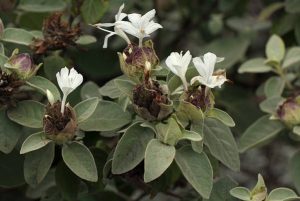
Barleria albostellata. Photo: Bart Wursten. Source: Flora of Zimbabwe
We like to think of this area as being an extension of the Matobo Hills due to some of the vegetation being the same as the Matopos, Barleria albostellata, Maytenus heterophylla subsp. puberula, Ruspolia hypocrateriformis and Turraea fischeri come to mind in this regard.
We spent most of the morning in amongst the rocks and took one trail to the river, coming back to where we had parked our cars along the same route. In all we recorded some 75 species of trees, shrubs, herbs and lianas. There are about 3 or 4 trails that one can take and they are all worth exploring as we have found on previous visits. It would be nice to spend a whole day in this area as we missed some of the plants found on other occasions such as Gardenia resiniflua and Ochna holstii. We made a stop at the Khami Dam for lunch before returning home to Bulawayo.
-Anthon Ellert.
THE IMPORTANCE OF AND CULTIVATION OF WARBURGIA SALUTARIS IN KWAZULU/NATAL
Warburgia salutaris or the pepper-bark tree is a rare tree in the northern parts of KwaZulu/Natal where scattered populations are found. These are either in open woodland, riverine forest or dune forest in northern Maputaland. It seems it is rare because the province represents the southern most limit of its distribution and in addition the demand for these trees exceeds the various known populations.
Its bark is sought after and valued for its medicinal properties. It is used as a remedy for colds, influenza, sinus and chest ailments. The bark is either chewed or made into an infusion which is drunk, or it is ground into a powder. In this form it is applied to sores or taken as snuff. A bark preparation is used to treat malaria.
The trees, especially big specimens, are over-exploited in the wild. While trained herbalists do little damage as they remove only the outer bark, harvesters who supply markets, often ring bark the tree and kill it. Bigger pieces of bark are considered more potent.
There are many markets selling herbal materials in KwaZulu/Natal and turning up occasionally at these markets are small quantities of Warburgia bark selling for about R1.00 per bundle. Large pieces which are sometimes offered for sale are assumed to be procured in Swaziland or Mozambique.
To help replace the fast dwindling Warburgia trees and other plants used in traditional medicine, the Parks Department of Durban has established a nursery at Silverglen Nature Reserve. This centre propagates plants used in the herbal trade and some that have become rare.
The centre grows 1500 seedlings of Warburgia a year and encourages people to “farm” these trees. Within the last three years, a number of people have started growing them. Many of the trees are sold to other nurseries or supplied to N’angas when they attend Silverglen courses.
Seed from the wild is heavily parasitised and at Silverglen propagation is by tip cuttings in a medium where bottom heat is applied. This stimulates callus formation followed by the emergence of rootlets. The seedlings are then potted out, and finally marketed.
I paid the centre a visit while on a conference at Botha’s Hill and found the video on herbal trade and the nursery tour fascinating. If you are on holiday in the Durban or North Coast area, you would find a trip to this nursery very worthwhile.
The Reserve at Silverglen has also laid out trails where some of the 120 tree and 150 bird species can be seen. I can supply a map and further information on request
-Leslee Maasdorp
This extract from Flowing Plants of the World Consultant editor V H Heywood.
EBENACEAE
The Ebenaceae is a medium sized family mainly of tropical trees, the source of ebony and persimmons. Distribution. The greatest concentration is in the lowland rainforests of the Malay Archipelago, with about 200 species, followed in abundance by tropical Africa, then Tropical America. There are a few outlying species in the North Temperate Zone.
Diagnostic features. Members of the family are mostly small trees with a monopodial crown i.e. with a single leading shoot) and flattened foliage sprays. Some are shrubs. The outer bark is usually black, gritty and charcoal-like. There is no latex. The leaves are alternate (rarely opposite), simple, entire and without stipules.
The flowers are usually unisexual (with male and female on separate plants), rarely structurally bisexual.
Inflorescences are short and determinate, in the leaf axils, sometimes reduced to a single flower, especially in the female. The flowers are joined at the base and regular, with parts mostly in threes or fives (sometimes sixes or sevens). The sepals are fused, with lobes valvate (with the margins adjacent without over¬lapping) or imbricate (overlapping as in a tiled roof). The petals are fused into a tube with as many lobes as there are sepals, the lobes contorted (twisted in the bud so that they overlap on one side only; spirally twisted), white, cream or suffused pink. The stamens are usually epipetalous (attached to the petals or corolla), in two whorls, two to four times the number of the corolla lobes and fused in radial pairs. The female flowers usually bear staminodes (sterile, often reduced or modified stamens). The ovary is superior (rarely inferior). The male flowers usually have a pistillode (sterile, often reduced pistil). The fruit is a berry, the pericarp pulpy to fibrous, with a stony inner part, only rarely dehiscent. The seeds are several.
Classification. Nowadays nearly all species are put into the genus Diospyros (including Lissocarpa and Maba) with 400-500 species. Diospyros is pan-tropical with some outlying members. The only other genus, Euclea (14 species), is confined to eastern and southern Africa. Diospyros itself is closely knit and only a few small distinctive sections can be segregated from the main core.
Economic uses. The family is best known for the black, hard heartwood, ebony of commerce, produced by most but not all species of Diospyros. Diospyros reticulata (Mauritius) and Diospyros ebenum (Sri Lanka) are among the finest producers of ebony. The fruits of several species are eaten, throughout the range. A few have been brought into cultivation. Best known are the persimmons, a group of outlying warm north temperate species. Diospyros kaki of eastern Asia (kaki, Chinese or Japanese date plum, or persimmon), extensively cultivated in China and Japan; and known through to the Mediterranean. Diospyros lotus of Eurasia (date plum) and Diospyros virginiana of North America. Crushed seeds of certain Malaysian species are used as fish poison. In all species the fruit is extremely astringent until it is very ripe.
-T.C.W.
From W.P.U. Jackson’s book – Origins and meanings of names of South African plant genera.
Euclea – from the Greek eukleia, glory; from eukleos, report (i.e. of good report, famous); perhaps referring to the ebony-type wood of some species.
Diospyros – Greek dios, divine; pyros, grain of wheat Diospyros (Latin) was a plant with an edible fruit. (Palmer says pyros = pear; this is incorrect, pirum is Latin; apion, Greek).
Members of the family EBENACEAE found in Zimbabwe include:-¬
Euclea crispa ssp. crispa NWCES
Euclea crispa ssp. linearis sens. strict WCS
Euclea crispa ssp. linearis sens. lat. NCES
Euclea divinorum NWCES
Euclea natalensis ssp. acutifolia NWCES
Euclea natalensis ssp. angustifolia S
Euclea racemosa ssp. schimperi NWCES
Euclea undulata WC
Diospyros abyssinica ssp. abyssinica E
Diospyros batocana W
Diospyros ferrea E
Diospyros kirkii NWCES
Diospyros lycioides ssp. lycioides WS
Diospyros lycioides ssp. sericea NWCES
Diospyros mespiliformis NWCES
Diospyros natalensis NCES
Diospyros quiloensis NWCES
Diospyros senensis NWCE
Diospyros squarrosa NWCES
Diospyros usambarensis
ssp. usambarensis ES
Diospyros whyteana NCES
ANDY MACNAUGHTAN CHAIRMAN


